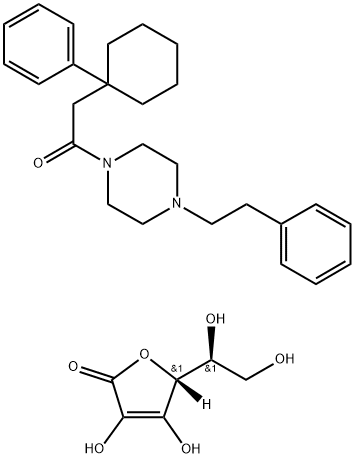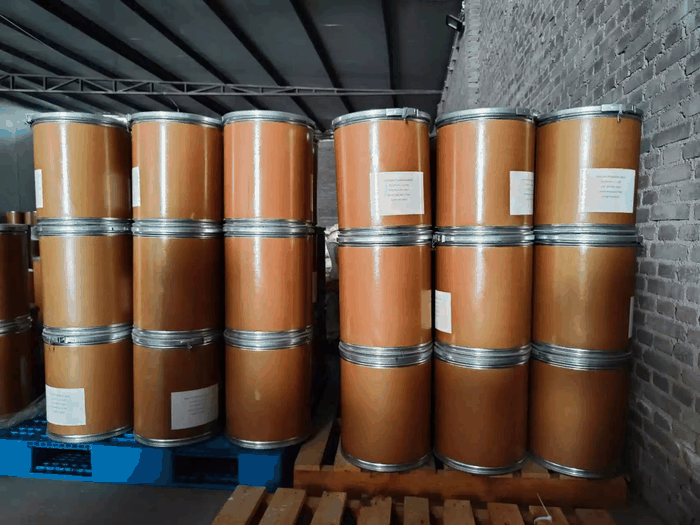Humic acid
Synonym(s):PGS 10
- CAS NO.:1415-93-6
- Empirical Formula: C9H9NO6
- Molecular Weight: 227.169998168945
- MDL number: MFCD00147177
- EINECS: 215-809-6
- SAFETY DATA SHEET (SDS)
- Update Date: 2024-12-18 14:15:32
What is Humic acid?
Chemical properties
black granules
The Uses of Humic acid
Metal chelator; pigments.Humic acid is used as a soil supplement in agriculture and human nutritional supplement. It is used to improve the growth and cultivation of crops, citrus, turf, flowers. It is also used to improve the strength of organically-deficient soils. It is utilized to stimulate the immune system and treating the influenza, avian flu, swine flu and other viral infections.
The Uses of Humic acid
Drilling fluids, printing inks, plant growth.
Definition
A brown, polymeric constituent of soils, lignite, and peat; it contains the brownishblack pigment melanin. It is soluble in bases, but insoluble in mineral acids and alcohols. It is not a well-defined compound but a mixture of polymers containing aromatic
General Description
Humic acid (HA) is a heterogeneous macromolecule mainly found in soil and water.
Agricultural Uses
Humic acid is a partially decomposed aromatic, organic matter that originates from terrestrial vegetation. It is made up of dark colored amorphous materials and is the end-product of the action of bacteria and certain enzymes. Most of the humic acid has a large fraction of carboxylic functional group which enables the humic acid molecule to chelate with positively charged multivalent ions (Mg++, Fe++ etc). The action of chelation helps plants to absorb the nutrients effectively. This function is one of the most important roles of humic acid. Humic acid also contains the phenolic functional group.
;Humic acids are derived from peptide, lipid and carbohydrate precursors. Peat, lignite coal, leonardite,decomposing driftwood and fish excreta are rich in humic acids. Leonardite is a highly oxidized form of organic matter and is technically known as a low rank coal which is between peat and sub-bituminous coal. Most of the humic acid found in rivers, lakes and even oceans has flowed from land over long periods of time. In the aquatic media, humic acid molecules develop unique characteristics.
Humic acid can be broken down into two groups, based on the size and polarity of the individual components. The smaller, more polar fraction is called fulvic acid and the larger, non-polar fraction is the humic acid. The acids are soluble in sodium hydroxide.
Humic acids are soluble in alkaline solutions. But on acidification of the alkaline extracts, they precipitate (Fulvic acid, on the other hand, remains soluble on acidification of the extract). Their molecular weight is in the range of tens of thousands to a million. They are believed to be polymerization products of fulvic acids and their decay products.
The three main components of humus are humin, humic acid and fulvic acid.
Agricultural Uses
Humification is the process in which organic matter decomposes into humus.
Properties of Humic acid
| Melting point: | >300℃ |
| form | Crystalline powder |
| Water Solubility | Slightly soluble in water, with much swellingSoluble in organic solvents like acetone and benzenol. Slightly soluble in water. |
| Merck | 14,4752 |
| Stability: | Stable. Incompatible with strong oxidizing agents. |
| EPA Substance Registry System | Humic acids (1415-93-6) |
Safety information for Humic acid
| Signal word | Warning |
| Pictogram(s) |
 Exclamation Mark Irritant GHS07 |
| GHS Hazard Statements |
H315:Skin corrosion/irritation H319:Serious eye damage/eye irritation H335:Specific target organ toxicity, single exposure;Respiratory tract irritation |
| Precautionary Statement Codes |
P261:Avoid breathing dust/fume/gas/mist/vapours/spray. P305+P351+P338:IF IN EYES: Rinse cautiously with water for several minutes. Remove contact lenses, if present and easy to do. Continuerinsing. |
Computed Descriptors for Humic acid
Humic acid manufacturer
Arihant Chemical Industries
Amit Biotech Private Limited
Benzer Multitech India Pvt Ltd
ACI Industrial Organic PVT LTD
New Products
Tert-butyl bis(2-chloroethyl)carbamate 4-Methylphenylacetic acid N-Boc-D-alaninol N-BOC-D/L-ALANINOL 3-Morpholino-1-(4-nitrophenyl)-5,6-dihydropyridin- 2(1H)-one Furan-2,5-Dicarboxylic Acid Tropic acid DIETHYL AMINOMALONATE HYDROCHLORIDE 1,1’-CARBONYLDIIMIDAZOLE R-2-BENZYLOXY PROPIONIC ACID 1,1’-CARBONYLDI (1,2-4 TRIAZOLE) N-METHYL INDAZOLE-3-CARBOXYLIC ACID (2-Hydroxyphenyl)acetonitrile 4-Bromopyrazole 5-BROMO-2CYANO PYRIDINE 5,6-Dimethoxyindanone 5-broMo-2-chloro-N-cyclopentylpyriMidin-4-aMine 2-(Cyanocyclohexyl)acetic acid 4-methoxy-3,5-dinitropyridine 2-aminopropyl benzoate hydrochloride 1-(4-(aminomethyl)benzyl)urea hydrochloride diethyl 2-(2-((tertbutoxycarbonyl)amino) ethyl)malonate tert-butyl 4- (ureidomethyl)benzylcarbamate Ethyl-2-chloro((4-methoxyphenyl)hydrazono)acetateRelated products of tetrahydrofuran








You may like
-
 1415-93-6 98%View Details
1415-93-6 98%View Details
1415-93-6 -
 1415-93-6 Humic Acid 99%View Details
1415-93-6 Humic Acid 99%View Details
1415-93-6 -
 Humic acid CAS 1415-93-6View Details
Humic acid CAS 1415-93-6View Details
1415-93-6 -
 Humic acid CAS 1415-93-6View Details
Humic acid CAS 1415-93-6View Details
1415-93-6 -
 Humid Acid Technical 70% CAS 1415-93-6View Details
Humid Acid Technical 70% CAS 1415-93-6View Details
1415-93-6 -
 HUMIC ACID 99%View Details
HUMIC ACID 99%View Details -
 Humic acid CASView Details
Humic acid CASView Details -
 Humic acid CAS 1415-93-6View Details
Humic acid CAS 1415-93-6View Details
1415-93-6